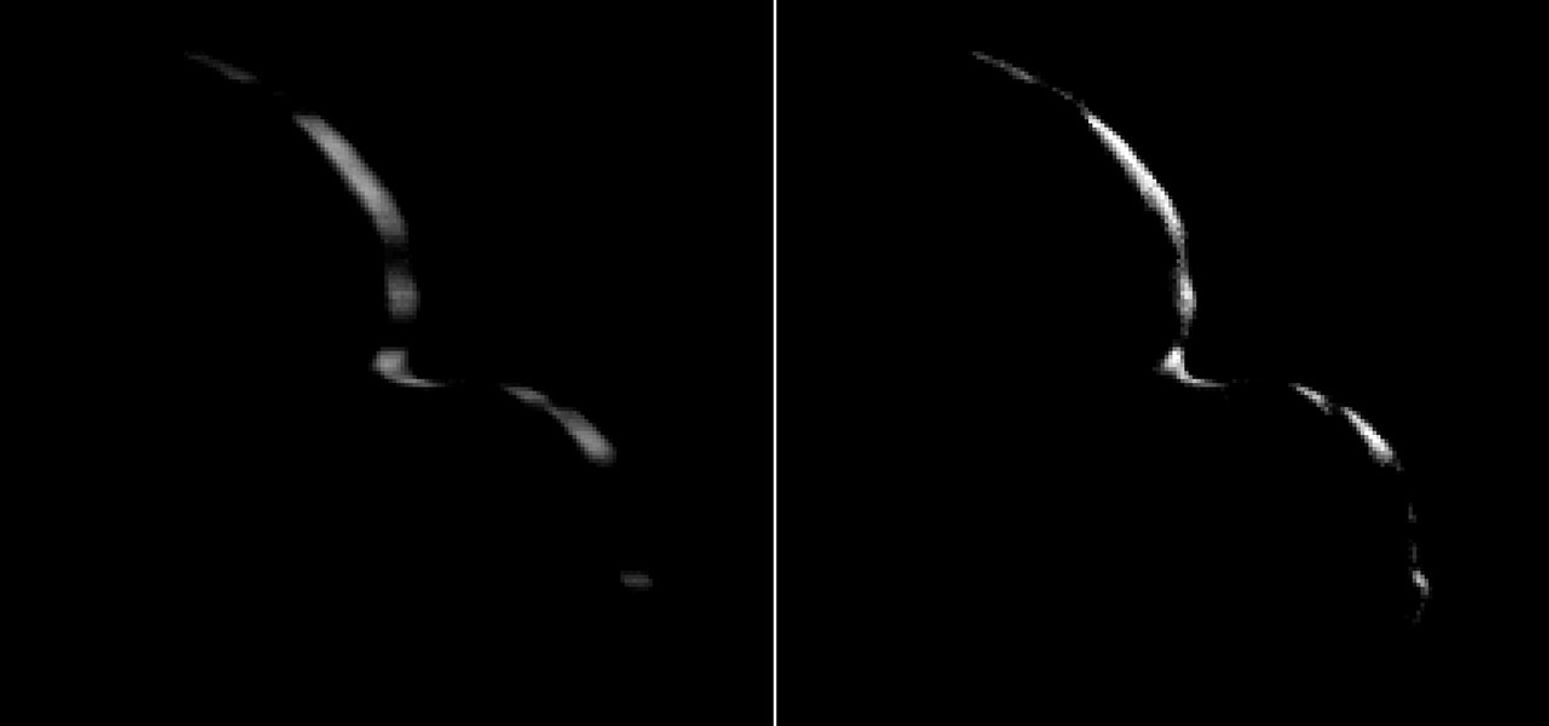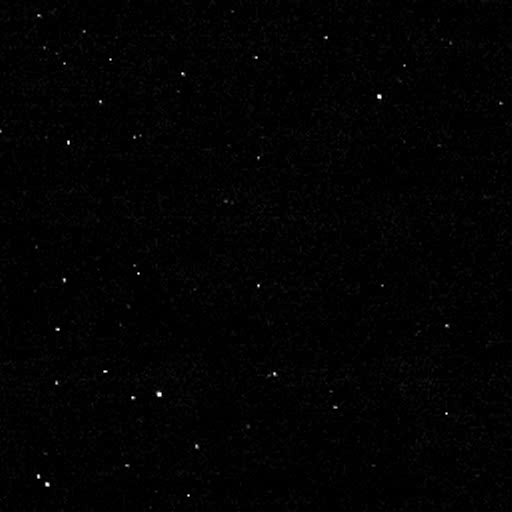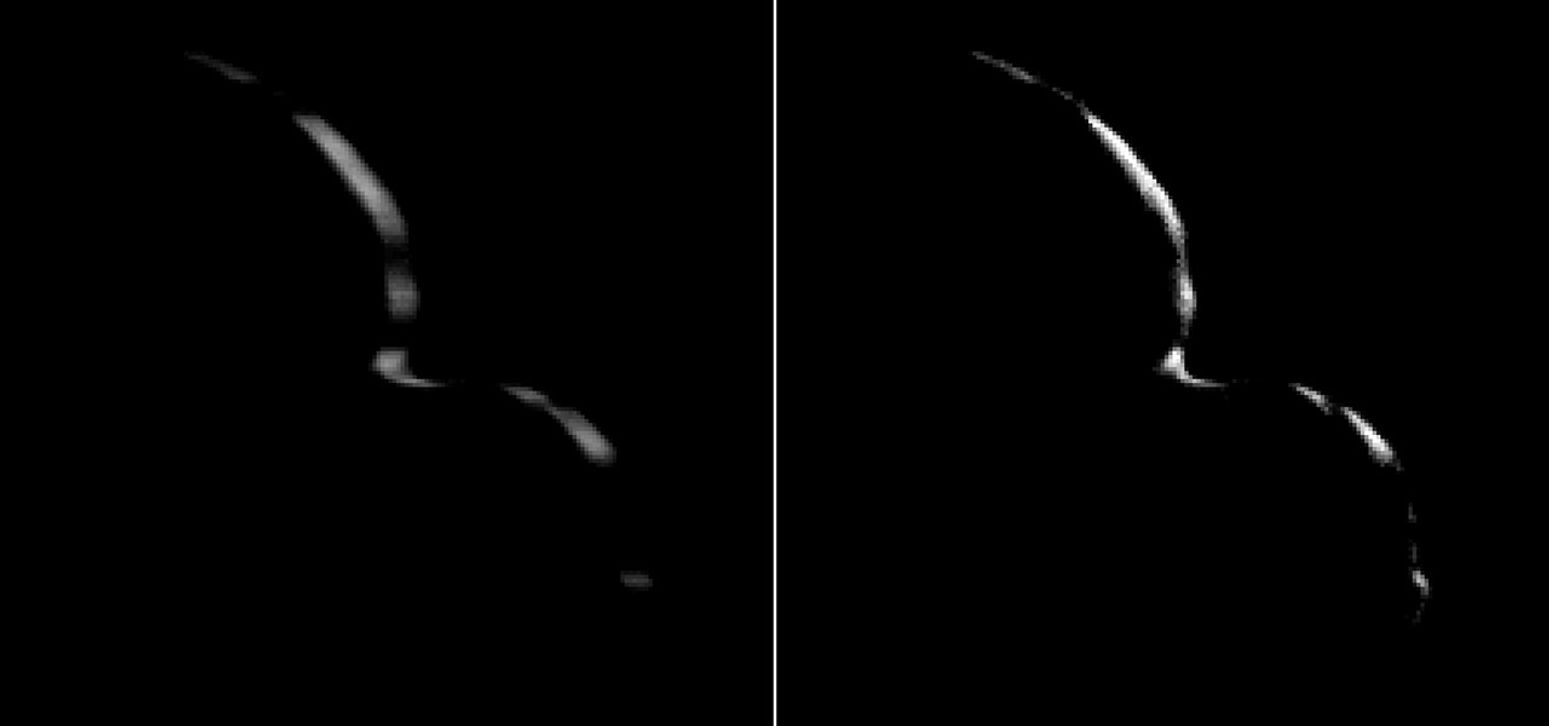Crescent View and New Shape of 2014 MU69
| Credit | NASA/Johns Hopkins University Applied Physics Laboratory/Southwest Research Institute |
|---|---|
| Historical Date | January 1, 2019 |
| Language |
|
New Horizons took this image of the Kuiper Belt object 2014 MU69 (nicknamed Ultima Thule) on Jan. 1, 2019, when the NASA spacecraft was 5,494 miles (8,862 kilometers) beyond it.
The image to the left is an "average" of ten images taken by the Long Range Reconnaissance Imager (LORRI); the crescent is blurred in the raw frames because a relatively long exposure time was used during this rapid scan to boost the camera’s si'gnal level.
Mission scientists have been able to process the image, removing the motion blur to produce a sharper, brighter view of MU69's thin crescent.
New Data, New View
Scientists' understanding of Ultima Thule has changed as they review additional data. The "old view" in this illustration is based on images taken within a day of New Horizons' closest approach to the Kuiper Belt object on Jan. 1, 2019, suggesting that both of "Ultima" (the larger section, or lobe) and "Thule" (the smaller) were nearly perfect spheres just barely touching each other.
But as more data were analyzed, including several highly evocative crescent images taken nearly 10 minutes after closest approach, a "new view" of the object's shape emerged. Ultima more closely resembles a "pancake," and Thule a "dented walnut."
The bottom view is the team's current best shape model for Ultima Thule, but still carries some uncertainty as an entire region was essentially hidden from view, and not illuminated by the Sun, during the New Horizons flyby. The dashed blue lines span the uncertainty in that hemisphere, which shows that Ultima Thule could be either flatter than, or not as flat as, depicted in this figure.


































